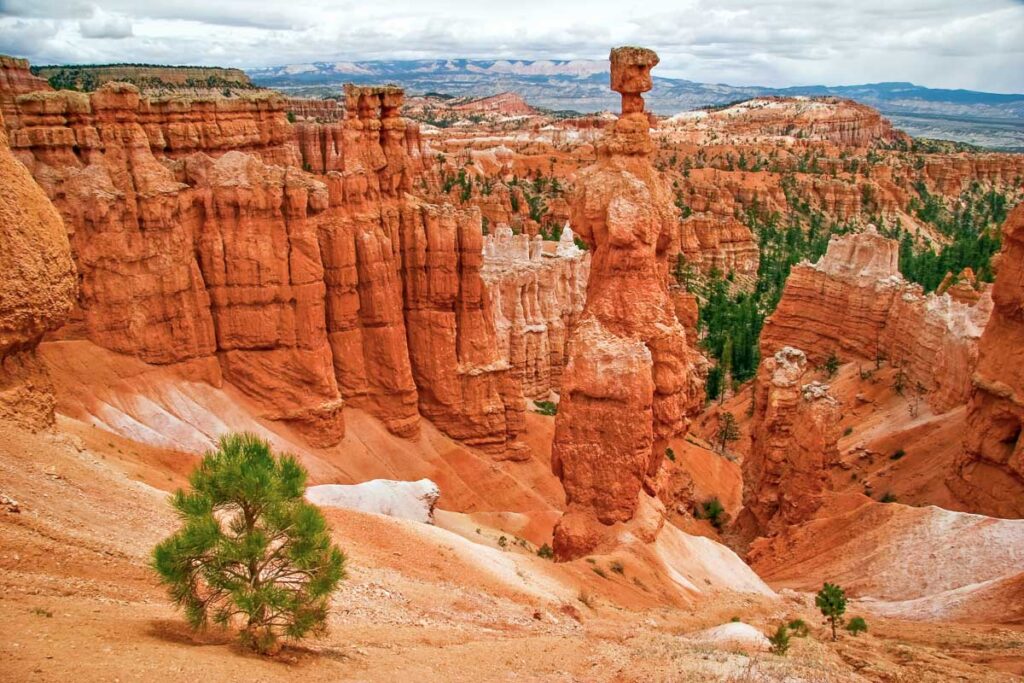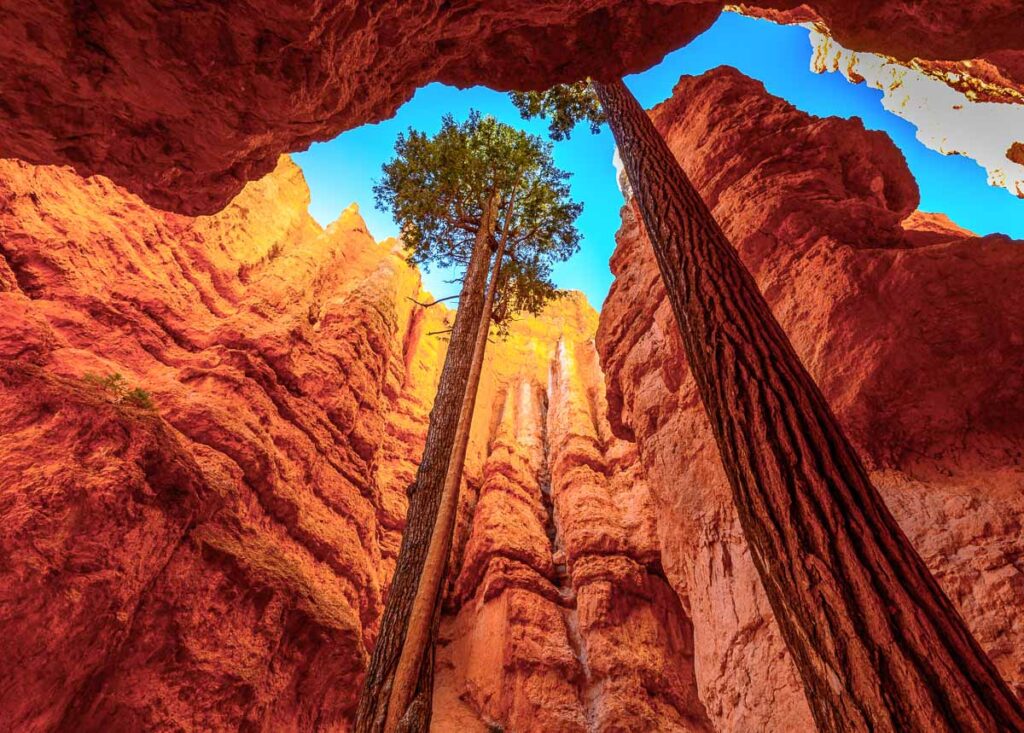Why Now Is the Best Time to Capture Utah’s Most Photogenic Canyon Views Without the Crowds

What’s the best time to visit the world’s largest collection of hoodoos set against the stunning backdrop of the Colorado Plateau?
During my own 5-month road trip through the southwest and up the Rockies, I made it to this national park in Southern Utah in the not-amazing period of late winter. I have to say it was pretty darn chilly during the day, but at least I had the park almost all to myself.
The weather at Bryce Canyon can range from sizzling summers to frosty winters. So, here’s a snapshot of the visitor seasons at Bryce Canyon:
- Peak Season: May to September
- Shoulder Season: March to April and October to November
- Off-Peak Season: December to February
Next, I’ll get into the specifics about the seasons, events you wouldn’t want to miss, and a monthly climate breakdown. Whether you’re planning a one-day trip to Bryce Canyon or a longer stay, hiking the Rim Trail, or exploring the Queen’s Garden, these are the best times to go to Bryce Canyon National Park.

Best Time to Visit Bryce Canyon National Park
Best Time of Year to Visit
The ideal time to travel to Bryce Canyon National Park is undoubtedly during the late spring, specifically May and June. During these months, the weather is comfortable, perfect for hiking and overnight camping without the extreme temperatures or heavy tourist traffic seen in peak summer.
Best Time for Good Weather
The best weather conditions lie in late spring or early fall. September and early October offer clear skies and pleasant temperatures ranging from 50°F to 70°F, which is ideal for hiking and sightseeing without the chill of late autumn or the intensity of summer sun.
Best Time for Smaller Crowds
The off-peak months of November through March see the thinnest crowds, partly due to the colder temperatures, with daytime averages ranging from 20°F to 40°F.
January and February see the smallest crowds, comprising only about 10% of the summertime peak visitors. These months are favored by those who prefer the peaceful silence and the frosty beauty of snow-dusted hoodoos. For perspective, the park had over 300,000 visitors during peak months in the most recent year.
Cheapest Time to Visit
The cheapest time to visit Bryce Canyon National Park is during the off-peak winter months from November through March. Not only will you find the cost of accommodations significantly lower, but you’ll often encounter discounted rates on tours and activities due to fewer visitors.
Best Time for Stargazing
The best months for stargazing at Bryce Canyon National Park, an International Dark Sky Park, are from April to June, when the skies are typically clear, and the park’s elevation provides crisp views of the cosmos. With minimal light pollution and the cooler nights of late spring, you’ll experience the night sky brimming with stars, planets, and meteors. Plus, the park’s Astronomy Festival is in June.

Worst Time to Visit
The worst time to hit Bryce Canyon National Park is typically from December through February, when the park is blanketed in snow, making many trails difficult to navigate. Slippery conditions and frigid temperatures can drop well below freezing. If you’re not equipped for or enthusiastic about winter adventures, swap icy paths for the comfortable climes of other seasons.
Park Closures
Bryce Canyon National Park is open to visitors 365 days a year, 24 hours a day. The visitor center opens daily from 8 AM, with closing times varying depending on the season.
During unexpected snowstorms, the main park road might be temporarily closed at Mile 3 for snowplow operations. Closures usually last a day, but the Bryce Amphitheater area is the first to be plowed, so you’ll be able to see the highlights as soon as possible.
Two roads shut down for winter: the 1 mile road to Fairyland Point and the 0.3 mile road to Paria View. These roads are closed when snow needs to be plowed, but you can still hike, ski, or snowshoe there.

Seasons at Bryce Canyon National Park
Spring (March-April)
Spring at Bryce Canyon brings warmer temperatures and longer days. March and April can be unpredictable, one day winter gear, the next, just a t-shirt. By May, it’s consistently comfortable, with temps in the 50s and 60s°F. Muddy trails from snowmelt mean waterproof boots are a good call.
As the snow melts, the colorful hoodoos and wildlife like pronghorns and peregrine falcons come out. Crowds are still thin, making it an ideal time to enjoy popular paths like the Navajo Loop without the summer masses. Wildflowers pop up, adding color to the red rock.
While evenings can dip into cooler temperatures, they’re perfect for gathering telling stories around a campfire with fewer campsite neighbors.
Annual park events begin to ramp up, including the Prairie Dog Day in early March, where you can learn about these ecosystem engineers. Easy trails, nice weather, and fewer crowds make spring the best time to visit Bryce Canyon.
Summer
Summer is the high season at Bryce Canyon, with the longest days and warmest weather. Daytime temps are in the 70s and 80s°F, but bring a fleece for cooler evenings—it gets pretty chilly once the sun sets!
Wildflowers cover the high meadows during these months, and the dry forest smells like ponderosa pine and earth. It’s the best time for those long hikes through the park’s natural amphitheaters.
But there are always downsides to excellent weather. July and August are super busy, so popular trails can feel packed, especially since the park isn’t that large. Opt for early morning hikes or less-traveled paths to avoid the rush. And book your campsite or lodging early—last-minute plans will have you out of reasonable value accommodations.
From mid-July to September, afternoon thunderstorms are common, so stay safe by avoiding open areas and high points due to lightning risks. But the post-storm light gives you amazing rainbows over the hoodoos. Despite the busyness, summer’s a blast here.

Fall (September-November)
Autumn in Bryce Canyon is when the crowds begin to thin out. Personally, I think it’s the park’s best time to go. September still clings to summer’s warmth with daytime temps hitting the 60s and 70s°F, but by November, you’ll want to have your warm layers handy, as it can drop to a brisk 30s°F.
The aspens and maples turn gold and red, pairing nicely with the natural red rock. Mule deer, elk, and even the occasional black bear are often spotted preparing for the winter months.
Hiker tip: the trails less traveled in summer are now all yours. The Fairyland Loop and Peek-A-Boo trail are my go-to’s for solitude and scenery. Plus, no need to elbow your way through a queue at Sunset Point.
One last pro tip: Check road and weather conditions. Fall weather can be a bit dramatic; think the occasional snowstorm or rain shower that can close roads and trails temporarily.
Winter (December-February)
Winter transforms Bryce Canyon into a silent blanket of thick snow that clings to the hoodoos. Daytime temps hover between 20s and 30s°F, and nights often dip below freezing. Snowstorms? Absolutely part of the package.
But the park is peaceful, and the views are unobstructed by crowds. You may just have to be content with road closures, especially if it’s snowed recently.
Trails are fewer, but snowshoeing and cross-country skiing become the star activities. Rentals are available, and ranger-led snowshoe hikes can give you the inside track on winter wildlife spotting.
And finally, the Bryce Winter Festival in February is low-key but worth braving the cold for. Ice sculpting, archery, and winter astronomy sessions are surprisingly fun.

Bryce Canyon Weather By Month
Here is a month-by-month breakdown of the average high and low temperatures and precipitation at Bryce Canyon National Park:
| Month | Avg High (°F) | Avg Low (°F) | Normal Rain (in”) |
| Jan | 37 | 15 | 1.8 |
| Feb | 38 | 17 | 1.4 |
| Mar | 45 | 23 | 1.5 |
| Apr | 54 | 29 | 0.8 |
| May | 64 | 37 | 0.8 |
| Jun | 75 | 45 | 0.6 |
| Jul | 80 | 53 | 1.6 |
| Aug | 77 | 50 | 2.0 |
| Sep | 70 | 42 | 1.8 |
| Oct | 58 | 32 | 2.0 |
| Nov | 45 | 23 | 1.3 |
| Dec | 36 | 15 | 1.2 |
Best Time of Day to Visit
The best time of day to visit Bryce Canyon is during sunrise or sunset. The midday sun tends to wash out the colors for your photos, but the sharp colors of the sun during golden hour are something else.
Here’s a quick breakdown of what you can expect throughout the day:
- Sunrise: It’s worth waking for. As the first rays of the sun hit the amphitheater, it lights up in hues of orange and red.
- Midday: This might not be the best time for photography as the overhead sun can lead to harsh lighting and washed-out colors. However, it’s a great time to explore the hiking trails.
- Afternoon/Early Evening: As the sun begins to set, the lowering sun casts long shadows, and the colors deepen, making it another prime time for photography.
- Nighttime: Don’t pack up just yet! Bryce Canyon is famous for its clear, dark skies, making it an excellent spot for stargazing.

Special Events or Festivals
Here’s a list of some special events and festivals happening in or near Bryce Canyon National Park:
- Bryce Canyon Astronomy Festival – This event takes place during the new moon in June for a special chance to admire the starry night sky.
- Bryce Canyon Country Rodeo – A must-see event for rodeo fans.
- Independence Day Celebration – A festive way to celebrate the 4th of July amidst the scenery of Bryce Canyon.
- Bryce Canyon Winter Festival – Check out the winter magic at Bryce Canyon during this yearly festival.
- Bryce Canyon Mule Days – A unique event where visitors can learn all about mules and their importance in the park’s history.
- Bryce Canyon Ultra Marathons – Fitness fans find these ultra-marathons along the park trails a true endurance challenge and an opportunity to relish the scenery.
Before you Close That Tab…Where to Next in Utah?
Utah may very well be one of the most underrated, beautiful places in the world. I’ve traveled all through this great state, snowboarding down some of the best resorts and hiking through godly monoliths. If you’re heading elsewhere in Utah, check out these posts.
- One Day in Zion National Park Itinerary for Adventurers
- One Day in Arches National Park Itinerary for First-Timers
- Perfect One Day in Canyonlands Itinerary for First-Timers
- Perfect One Day In Salt Lake City Itinerary For First Timers
- Perfect One Day In Bryce Canyon Itinerary For First-Timers
Catherine, a seasoned travel writer, has lived in 4 different states and explored 36 states and 28 national parks. After spending two years embracing van life, she's now dedicated to sharing her vast knowledge of day trips across America. Catherine's other works has been referenced in major publications like MSN, Self, and TripSavvy.
| MY FAVORITE TRAVEL RESOURCES |
✈️ Find amazing guided tours and experiences with Viator to maximize your time! 🏘️ Plan ahead and secure your accommodation with Booking.com in advance. 🧾 Rent a car with Discovercars in advance and get the best prices for your day trip adventures. |

